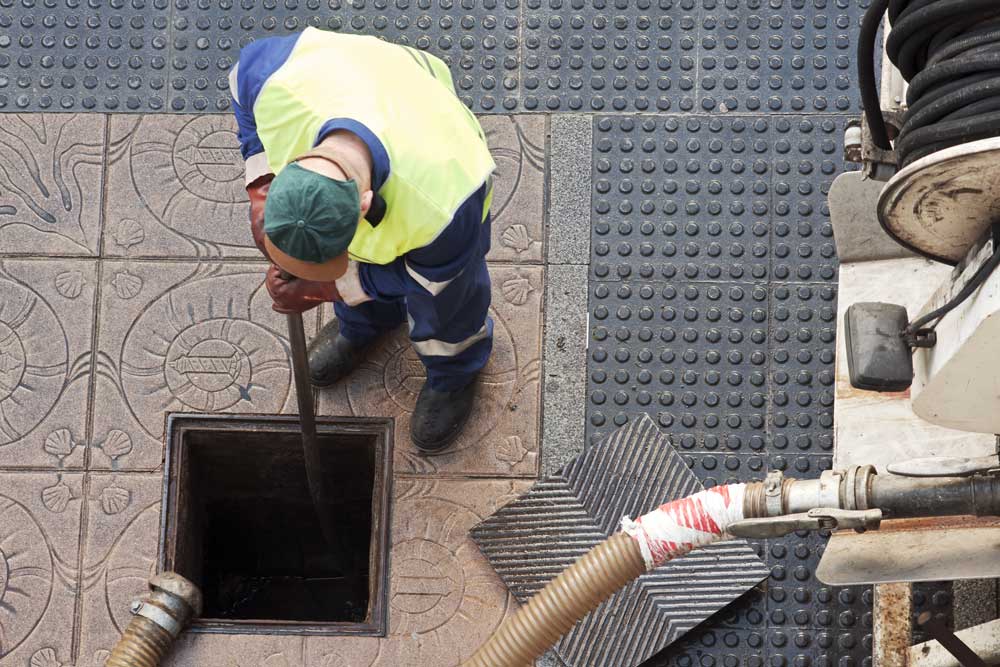
Despite a well-designed plumbing system, almost inevitably, issues can still arise because of some factors that can form buildup in your sewer drains and make it stop functioning. These include food particles, and some elements like hair and coffee grounds that don’t easily break down, escape from traps, and go into the sewer drains. Foreign items that made their way into the sewer drain is another contributor that is not a surprise for houses with little kids. But the most common culprit for a blocked drain that plumbers encounter on numerous occasions are root intrusions, sanitary products, and other elements like dirt, dust, and debris that have remained out of sight for ages and formed a buildup.
While there are ways to remove a fresh and simple block in a jiffy, like using a chemical remover, this can over time turn your plumbing system into a money pit or your sewer system to completely fail. So before this happens to you, we’d like to take you through these relatively easy to follow ideas on how to get rid of the stubborn elements that are blocking your drains. Bear in mind, while some of these may magically dislodge your blocked drains, they need a proper approach to achieve a successful result.
How to get rid of drain blockages?
- Plunger – This is by far the most classic method that is tried-and-tested. You’ll come across different kinds of this, but that doesn’t matter as they all work very similarly anyway. To make it work effectively, you need to have good suction and plunging skills in pumping up and down until you can feel that the obstruction has dislodged. You can add petroleum jelly to the edge of the suction pad to get a more secure seal. Using plunger may be an easy option to try at home, but it’s not always effective since the success can sometimes depend on the type of plunger you’re using, the size and type of materials blocking your drains, and your plunging skills; this is also not for everyone, as likely the case if you’re not careful, you’ll end up having a splash on you.
- Plumber’s snake – Toilet jack or plumber’s eel as it’s also known for, is another alternative for fixing blocked drains. It is a small piece of plastic that has tiny teeth on the sides that serve as resistance against hair and tiny particles clogging up your drain. To use it, you need to push the snake down until you feel resistance to break up the clog. You can repeat the steps until the clog has ejected.
- Hook and Coat hanger – These are ancient methods for fixing clogged drains. Simple enough, but surprisingly effective for clogs that have not made its way down the sewer. Simply insert the hook into the sewer drain to push through or pull out the clog. If you don’t have a hook, you can also use a traditional coat hanger made of wire and straighten it out as best as you can. Bend over to create a small hook and start your pursuit for clogs. You’ll be surprised to fish all sorts of nasty stuff and balls of hair with this method.
- Boiling water – Boiling water is another easy, always available option when it comes to unclogging your drains. Hot water melts fats and hardened grease away though it won’t help break down other food waste in your kitchen drains. To boil faster, add salt and dump it down your drains straight from the pot.
- Baking soda – This cake-baking ingredient mixed with either vinegar or salt, makes an excellent clog remover. Remove any standing water first before pouring about a cup of baking soda into the drain, followed by an equal amount of vinegar, or a cup of baking soda and a half cup of salt. This mixture can make magic in your drains. Regardless of which combination you wish to use, allow the mixture to sit for several hours or overnight first, and flush with boiling water.
- Chemicals – This is by far the quickest option amongst in the list, but this should be carefully, periodically, and lightly used as they can damage your pipes. You can find effective chemical cleaners at hardware stores, and supermarkets near you. To effectively use this, you have to meticulously follow the instructions on the packaging, NOT too much. Remember, the success of this method lies in your ability to follow instructions. Also, since chemicals contain harsh elements that can burn your skin and irritate your eyes, make sure to use gloves and goggles when you decide to use this method.
Now that you’ve eliminated those nasty clogs with these handy ideas, you should do all things possible not to deal with them at all. However, as often the case, it is almost unavoidable not to run into plumbing problems especially, when you don’t have a preventative measure at home. Even if it is the case, some preventative measures can fail because of stubborn clogs that can only be removed by an expert and through extensive repair, e.g. tree roots, or clogs that have been in your sewer for ages.
If you don’t want to make your plumbing system a money pit or make the plumbers tie up loose ends because of what you failed to accomplish, take this opportunity to speak with a Pipe Relining Sydney or Blocked Drain Sydney company to sort it out for you. Always remember, the success of every repair lies NOT in the option available, but in the right tools, skills, and expertise.
